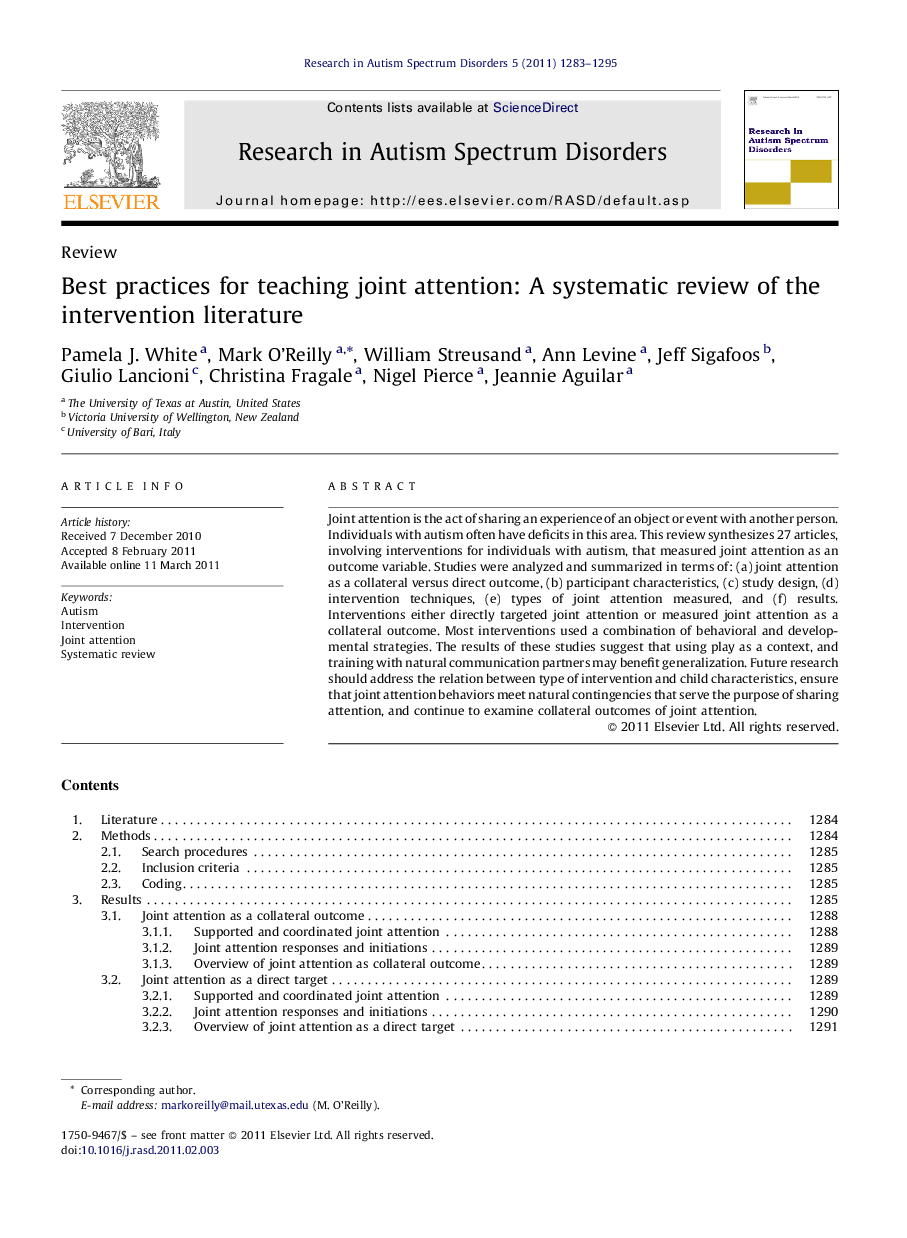| Article ID | Journal | Published Year | Pages | File Type |
|---|---|---|---|---|
| 370641 | Research in Autism Spectrum Disorders | 2011 | 13 Pages |
Joint attention is the act of sharing an experience of an object or event with another person. Individuals with autism often have deficits in this area. This review synthesizes 27 articles, involving interventions for individuals with autism, that measured joint attention as an outcome variable. Studies were analyzed and summarized in terms of: (a) joint attention as a collateral versus direct outcome, (b) participant characteristics, (c) study design, (d) intervention techniques, (e) types of joint attention measured, and (f) results. Interventions either directly targeted joint attention or measured joint attention as a collateral outcome. Most interventions used a combination of behavioral and developmental strategies. The results of these studies suggest that using play as a context, and training with natural communication partners may benefit generalization. Future research should address the relation between type of intervention and child characteristics, ensure that joint attention behaviors meet natural contingencies that serve the purpose of sharing attention, and continue to examine collateral outcomes of joint attention.
Research highlightsThis review examines the research on joint attention. Play is the primary context in which these skills are taught. Strategies for teaching joint attention typically consist of behavioral and developmental instruction. Future research should focus on matching instruction to type of joint attention targeted and to developmental level of the child.
